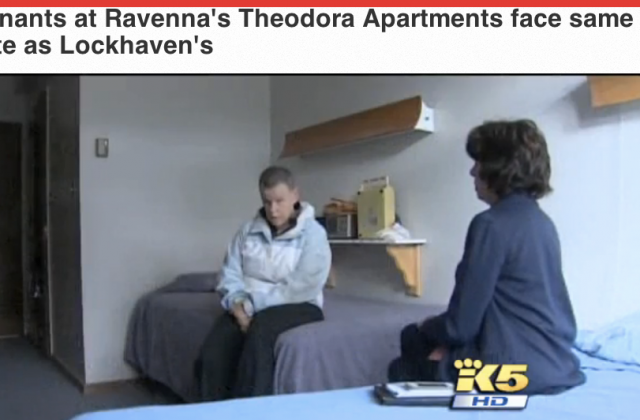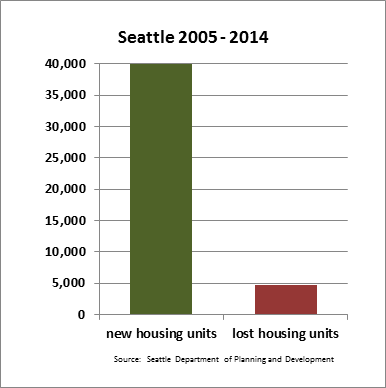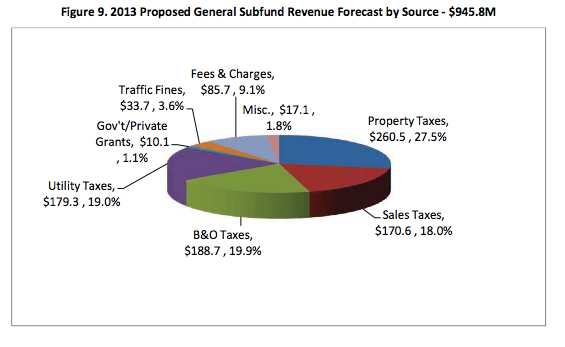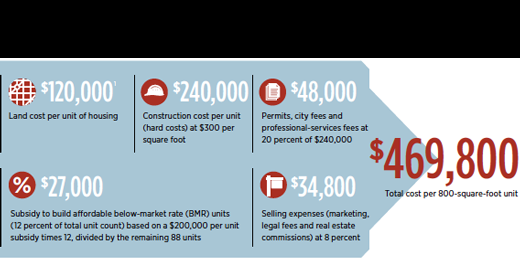Bagshaw’s Statement of Legislative Intent: No More Sad Stories
Councilmember Sally Bagshaw introduced a Statement of Legislative Intent (SLI) directing the Office of Housing to create an Affordable Housing Preservation Plan (AHP). We think this will go a long way to stop the sad stories reported in the press when non-profit buildings get purchased by for profit developers. Have a plan that includes tracking of which buildings in Seattle might be having problems that might force a sale is better for tenants and for helping get the story right in the press.
You’ve seen them more than once, the sad stories of people facing huge rent increases when a developer buys their building. Newspaper accounts or television stories follow the same pattern. Lots of images of the tenants usually old or disabled and wondering where they’ll go. Usually there is no on camera comment from the purchaser of the building who is usually just called “a developer.” The punchline of the story is usually all about “skyrocketing rents” or “growing development.” The general impression is that all over town people are being ejected from their homes to make way for fancy towers of expensive, high end apartments for techies. The stories seem to validate everyone’s worst fears: the more we build, the higher the prices and the more we displace people.
However, we know this isn’t true.
The truth is that very few people have been displaced over the years Seattle has grown the most. Of the buildings that have been demolished to make way for new housing it’s likely that none have been large publicly funded housing units; mostly they have been smaller, less dense market rate units replaced with denser development. This is particularly true in the Low-Rise zones, most of which have old single-family homes that give way to more efficient development.
The sad stories are not only rare, but are almost never caused by a private party trying to acquire a subsidized building. Usually, as in the case of the Theodora in Ravenna, the story is one of a non-profit owner who falls behind on deferred maintenance. When rents go up, part of the reason is to keep up with taking care of an aging building. When rents can’t be raised because of promises made by the non-profit to government funders, then money has to come from somewhere else. When that money can’t be found–and no other non-profit can afford to operate the housing–the non-profit has no choice but to sell.
This is unfortunate, but it is very different story than the one conveyed by the media and anti-growth crowd. The City should have a way of tracking properties like the Theodora and doing what it can to keep the affordable units affordable. If that can’t happen, then tenants should be told a long time in advance and relocated to comparable units somewhere else in the City. Have enough notice that there might be a sale would prevent situations like the Theodora happening again, either because plans would be made for helping people move or the building wouldn’t have to be sold.
The SLI offered by Councilmember Bagshaw starts this conversation. Here’s the key text from the SLI:
Elements of an Affordable Housing Preservation program could include:
- Enforcement of contract or subsidy termination notice requirements;
- Monitoring housing projects with contracts or subsidies that are expiring or could be terminated;
- Conducting outreach to property owners, tenants and stakeholders; and
- Facilitating property transactions that preserve affordable units.
The Executive is requested to submit an AHP program plan to the Housing Affordability and Livability Agenda Advisory Committee established in Resolution 31546, no later than March 31, 2015. The Council’s Committee on Housing Affordability, Human Services and Economic Resiliency will consider recommendations from the advisory committee in the latter half of 2015.
We think the effort should start with buildings owned by non-profits first. Tracking those is a challenge because many are funded by Housing and Urban Development (HUD) and don’t report to the City. But every single building should be on someone’s radar screen. Then, later, the program could be expanded to cover “down rent” buildings that could have troubles with deferred maintenance that could force a sale and raise rents. A SLI is just what it sounds like, an intent to get something started.* So there isn’t a hard and fast outcome from this, but it should, hopefully, inspire some creativity. And we think it is an important first step.
The answer isn’t more mandates but for the City to track affordable units, find out early when there is a problem, act to preserve the units, and if a sale happens make the transition as easy as possible. We’re hopeful Councilmember Bagshaw’s SLI will lead to a collaborative effort from private for and non-profit developers to preserve naturally occurring affordable housing and put an end to the sad stories for good.
*Statement of Legislative Intent (SLI)
A SLI is used for various purposes, including to:
- explain an action, such as providing a rationale for a budget cut;
- give guidance for City policy, such as describing how a program is to operate;
- call for additional study, such as requesting a report analyzing the effectiveness of a new program; or
- create a work program for a department and/or the Council, such as calling for a study of a new concept or approach.
From the City Council’s Budget Glossary.
New Housing is Paying Fair Share for Growth
Last week I wrote about architect Mark Hogan’s analysis of housing costs in San Francisco. Hogan found that roughly 20 percent of unit costs in multifamily housing are attributable to the permitting process and fees. I suggested that if we could reduce some of those costs for non-profit, subsidized housing, we’d get more housing for our tax dollars.
Locally, I asked a private town home developer to give me a sense of what he paid for fees and other payments to local government. What affect do permits, fees, and taxes have on production costs, and does it make sense to add more costs using a linkage tax? After looking through his construction budget for a 4 unit project I found fees and taxes account for 18 percent of costs.
| Base Costs | Sales Taxes | City/County Costs | Total | ||||
| A. General Conditions | $48,498.21 | 89.5% | $4,607.33 | 9.5% | $- | $53,106.54 | |
| B. Site Work | $56,544.32 | 53% | $5,371.71 | 5% | $44,979.93 | 42% | $106,896.54 |
| C. Exterior | $415,128.16 | 89.5% | $39,437.18 | 9.5% | $- | $454,566.34 | |
| D. Interior | $385,318.75 | 89.5% | $36,605.28 | 9.5% | $- | $421,925.03 | |
| E. Soft Costs | $23,634.55 | 47% | $2,245.28 | 4% | $24,432.78 | 49% | $50,313.13 |
| F. REET | $38,087.94 | $38,087.94 | |||||
| G. Sewer Capacity | $224.70 | $224.70 | |||||
| H. County Taxes | $1,423.10 | $1,423.10 | |||||
| $929,123.99 | 82% | $88,266.78 | 8% | $109,148.45 | 10% | $1,126,543.31 |
A few notes about the numbers.
The areas where sales tax is lower than 9.5 percent, it’s because taxes aren’t charged on things like fees or permits. The fees to the City are primarily fees for inspections and permits and street restoration. These fees, paid to City departments, account for roughly 10 percent of this project’s cost.
One substantial part of the costs are Real Estate Excise Taxes or REET. This year’s City Budget document describes REET this way:
Spending from the Cumulative Reserve Subfund (CRS) is primarily supported by Real Estate Excise Taxes (REET), which have experienced considerable volatility in recent years. The City collected a record $71.8 million in 2007, but experienced a 68% decline in 2009 from that record level. While still projected to be 50% less than peak revenues in 2007, REET revenues for 2013 are estimated at $6 million above 2011 actual revenue collections, with an additional $4 million bump in 2014.
In 2014 the City will collect about $40 million in REET and about $986 million in over all revenue. The REET rate is 1.78% in Seattle and is levied on the sale price of real estate that is paid by the seller. That means $1,780 on the sale of a $100,000 property. The State portion of that is 1.28% and Seattle takes 0.5%. Funds collected from REET have limited use however and can only pay for:
Park trails
Parks
Streets, roads, highways
Sidewalks
Street lighting
Traffic signals
Bridges
Domestic water systems
Sewer systems
Administrative facilities
Law enforcement facilities
Fire protection facilities
Recreation facilities
Libraries
Judicial facilities
Currently the REET cannot be used to fund housing. And even though this project paid REET it still has to pay for sewer charges an connections even though those are covered by REET funding. In fact, pays for a lot of what people consider the impacts of growth. Here’s the opening paragraph of a helpful analysis of REET funds.
The City relies heavily on the real estate excise tax, commonly known as REET, to help fund its ongoing general government major maintenance program. REET revenues fund projects such as roof repair, playfield replacement, and street paving in the Parks, Seattle Center, Library, Transportation, and Fleets and Facilities departments. Growing maintenance demands and tightened revenue sources have prompted an increased focus on REET revenues. The following provides a background of this tax and examines general characteristics of the transactions that have generated this revenue for the City since 1982.
The City also generates substantial revenue from sales taxes, about $170 million in 2014, about 18 percent of the overall budget. The City’s collects 3.5 percent sales tax and the State collects the remaining 6 percent. Sales tax goes into the general fund and is unrestricted. Fees like the ones charged on this project are about half what’s collected in sales tax or about $85 million. The City’s Department of Planning and Development (DPD) collected 42,670,435 in 2013 alone. It’s pretty hard to argue that new development projects are NOT contributing to the overall financial position of the City as it grows, paying taxes and fees that help improve infrastructure.
But what would a $10 per square foot linkage tax do to this 8000 square foot project?
| Base Costs | Sales Taxes | City/County | Total | ||||
| A. General Conditions | $48,498.21 | 91% | $4,607.33 | 9% | $- | $53,106.54 | |
| B. Site Work | $56,544.32 | 53% | $5,371.71 | 5% | $44,979.93 | 42% | $106,896.54 |
| C. Exterior | $415,128.16 | 91% | $39,437.18 | 9% | $- | $454,566.34 | |
| D. Interior | $385,318.75 | 91% | $36,605.28 | 9% | $- | $421,925.03 | |
| E. Soft Costs | $23,634.55 | 47% | $2,245.28 | 4% | $24,432.78 | 49% | $50,313.13 |
| F. REET | $38,087.94 | $38,087.94 | |||||
| G. Sewer Capacity | $224.70 | $224.70 | |||||
| H. County Taxes | $1,423.10 | $1,423.10 | |||||
| I. Linkage Tax | $80,000.00 | $- | $80,000.00 | ||||
| $929,123.99 | 77% | $168,266.78 | 14% | $109,148.45 | 9% | $1,206,543.31 |
A linkage tax would almost double the amount of money the project is paying to the City and it would add as much as $30,000 in costs to the four units. But isn’t $80,000 divided by 4 $20,000 per unit? Since this is a for sale project, transaction costs would increase as the over all price goes up. This would include an increase in REET as well once the units are all sold.
And think about it, assuming that an additional charge paid at permitting wouldn’t be a deal breaker for the buyer and the bank, the fee would end up having to be financed at least in through the mortgage. With a down payment of $100,000 and rate of 5 percent, a $500,000 unit would end up paying $373,023.14 in interest over 30 years, while a $530,000 with the same down payment would pay $399,029.04, a $26,000 dollar difference.
Obviously this is a tiny project compared to all the building we’ll need to do over the next 20 years. But two things are clear: new development pays a lot to cover infrastructure already and other costs associated with growth and increasing those costs would increase housing prices. And as I’ve pointed out before, we already have some great, fair, and efficient tools, the Multifamily Tax Exemption program and the Housing Levy, to fund a spectrum of housing choices for people who need help.
San Francisco Organization Works to Make Housing Affordable
San Francisco has become the reference point for high priced housing in a dense city. Everyone wants to avoid the housing scarcity problems San Francisco faces. I’ve even described the San Francisco Death Spiral, what happens when people crow about high housing prices and officials respond with more rules and taxes which leads to higher costs and higher prices. Rinse and repeat.
But there is some hope for the City to the South: the San Francisco Housing Action Coalition.
Now I won’t say agree philosophically with SFHAC on everything; I’m not completely familiar with their views on every aspect of housing economics and the organization functions in a different context than we do. But they are trying to build the case for more supply and lowered costs through deregulation; something bedrock for Smart Growth Seattle. Here’s part of SFHAC’s mission:
SFHAC brings together San Francisco’s housing community to develop and support policies that will increase the production of new homes. Join our Regulatory Committee and bring new housing to San Francisco.
Sounds very deft to me. You don’t see “supply” there but very good language addressing the basic principle: more housing helps lower prices.
Here’s something from a recent blog post on the SFHAC blog on efforts to improve affordability in the SOMA neighborhood:
Add flexibility and streamlining to process and environmental review. The SFHAC has spoken about this for many years. There is a significant economic cost for the long time it takes to get residential development through planning and entitlements to the market
Amen. I see SFHAC as a visitor from what might be our future if we don’t change course soon.
Neighbors Using Sketchy Article Against Supply and Demand
Evidently there has been a year old article from San Francisco that has been circulated to members of the Mayor’s Housing Affordability and Livability Agenda (HALA) Committee. The article is called “SF Controller Shows ‘Supply and Demand’ Does Not Work in the San Francisco Housing Market.” Now arguing against and trying to prove that supply and demand have no effect on housing prices is the bedrock ideological starting point for people arguing for increasing housing costs by imposing a tax on new housing. If they can sow that increasing supply won’t help prices, then, they think, they’ll carry the day. So does the article deliver. The ambitiously titled 3 page paper (with derisive quotation marks around supply and demand) falls completely flat.
First of all, the entire paper is based on a chart showing building permits and condo prices and doesn’t include rentals or other types of housing, hardly a comprehensive review of the entire housing market. And the chart appears to show increasing prices for condos even though production is up. Building permits aren’t the best tool to measure production since completion of units lags behind granting permits. And here’s what an actual comprehensive review of housing inventory in San Francisco says about building permits:
If DBI approves the project following its own review, it issues building permits authorizing construction. Projects with approved building permits generally start construction within 90 days from the date the permit is issued. Start of construction, however, may be delayed for up to a year. If the permit is not picked up or acted on within 90 days, the permit expires. The number of units authorized for construction is a key indicator of future housing construction.
Projects are inspected by DBI at various stages throughout the construction process. However, inspectors only issue Certificates of Final Comple- tions (CFCs) for projects that are deemed 100% complete. Units certified complete are an indicator of changes to the City’s housing supply and include units gained or lost from new construction, alterations, and demolitions (emphasis is mine).
Here’s a chart of how it works:
So the chart is reporting just one part of the process and given the length of time between the beginning and certification there is a lag. Here’s the chart:
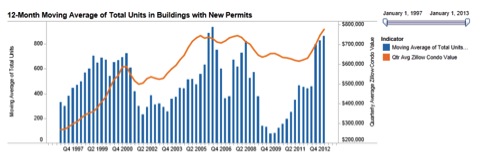
But when one follows the link in the footnote which leads back to the Controller’s actual website here’s what’s there:
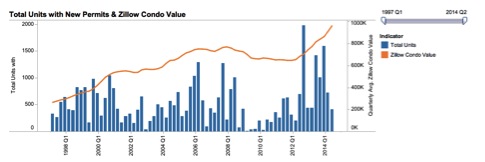
You can see the Zillow line trend up in 2014 as the number of units with new permits drops. I wouldn’t claim that this proves very much of anything, but the chart that the author claims makes and open and shut case for refuting hundreds of years of economics doesn’t include the last two years. Is that because the picture wasn’t as favorable showing an increase in prices when permits dropped? Who knows, but a chart looking at permits and condo prices on Zillow isn’t going to make a decisive case much no matter how you slice it and dice it.
But the author doesn’t just stop with an incomplete graph. He goes on to explain exactly why supply and demand doesn’t work. He makes three points.
First, he blames land owners. “There is no ‘free land’ in San Francisco. The owners have total ‘market power’ over its price.” Because property owners have a monopoly on land they are holding out for more and more money for the land driving up prices. Therefore, no matter how much housing San Francisco builds prices won’t go down. But he just made the case perfectly for supply and demand: land is in demand and there is low supply so it is very expensive. Somehow what applies to land, doesn’t apply to housing units. One could change the sentence so it reads like this, “There is no ‘free housing’ in San Francisco. The owners have total ‘market power’ over its price.” That’s because it’s hard to produce more of it, which is what contributes to higher prices. Density can absorb those costs, with more people sharing the costs of the land, construction, and financing. But if building is over regulated that can’t happen.
The authors second point is a bit confused also. He says that new supply is just that, new. New housing is more expensive. This is exactly what supply deniers always point to when new housing comes on line: see, they say, you built more and prices went up anyway. When you compare the price of new construction to overall housing prices the new construction is more expensive. It’s new! But the author points to the fact that housing price is affected by the sales of existing housing. He says, “any theory of price that ignores half of the sales is bound to be wildly inaccurate.” But that’s exactly what his article does, ignore overall prices over time. All he does is look at new condo prices compared to building permits and declares supply and demand dead. What happened to existing condo prices when more building happened? Did those old condos get cheaper? We don’t know because he didn’t do the work.
Lastly the author offers this:
In a market economy, housing is a commodity like soy beans or pork bellies. Speculation in commodities, driving wild swings in price, is a structural part of the market. Housing speculation in a “hot market” like San Francisco is simply part of the market with powerful impacts on price no matter what new construction is happening.
Wait. I thought it was the land owners holding out for more money that was driving up the prices. The author shifts gears and says is the speculative buyer that is pushing up prices because they have lots and lots of cash. So who’s to blame, the greedy land owner or the greedy speculator? What the author is trying to get at–with zero data to support it–is that something scarce, like land or Napoleon’s hat, gets very pricey. But that is called “supply and demand!” If I am buying something scarce at a high price, my business model requires that it stay scarce or get even more scarce so I can get a return. Over regulation makes sure that people buying land for a high price with cash has a shot at getting their money back and more.
And what is the author’s solution to the problem? His proposal is to expand rent control and “insulate” residents from “the market” by putting more housing into public ownership. There is something to the idea of public ownership. If the City government was to buy lots of the land they could build housing and charge low prices for it. But that would come at a tremendous cost–billions of dollars.
Rather than contorted arguments based on selectively edited charts and graphs the HALA Committee should focus on how we encourage and incentivize more housing production of all types all over the city at prices everyone can afford.
Cut Rules in Half and Create 1,960 Affordable Housing Units
I recently posted a comparison of how much housing we’re getting from existing City programs—the Multifamily Tax Exemption (MFTE) and the Levy—and what we’re paying for that housing. I also compared those to Councilmember O’Brien’s questionable tax on new housing. What I found, is that we’re producing a lot of housing every year through these two programs and the cost is low and evenly and fairly spread across all property owners, including wealthy ones. But what if we figured out how to save on permitting and regulatory costs? How many more units could we get if we made permitting easier?
Now, as I pointed out in an article in the Daily Journal of Commerce, with the exception of property tax, almost every cost carried by for profit developers is carried by non-profit developers. These costs include, sales tax, entitlement costs (like design review), land costs, and the increasing costs of labor and materials.
At Forbes, I wrote about a study of California affordable housing that found that costs were substantially increased by public process, including design review. Those costs, combined with parking requirements, added as much as 20 percent to the costs of building subsidized affordable housing. That means tax dollars and credits didn’t create as many units as they could have because of local regulation. This study was conducted and paid for by public agencies.
Finally, San Francisco architect Mark Hogan wrote a great article called The Real Costs of Building Housing, a solid review of why San Francisco is America’s most expensive city. In this article Hogan quantifies the costs of regulation as adding up to about 20 percent, a figure consistent with the study I cited in my Forbes post.
While I wait for more local numbers, I figured I’d put these all together and do the math. How much could we save by paring back regulation on housing? The City says we need 28,000 new affordable units over the next 20 years. Here’s how reducing regulation can create more affordable, subsidized units:
Cost of an affordable housing unit based on industry data: $250,000
Portion of this for construction: 69 percent, $172,500 (from the California study)
Portion of construction that is fees, permitting costs, etc: 20 percent, $34,500 (SPUR Analysis)
Cost of unit if we reduced fees etc. by half: $232,750
Cost of 100 units: $23,275,000
Total savings: $1,725,000
Number of additional units that can be built with savings: 7
Number extra if we built 1400 per year: 98
Over 20 years: 1,960
If we reduced just half of processing permits and other fees paid to the City, we could create 98 more housing units a year (about 1/3 of what the Levy created in 2013) or almost 2,000 over the next 20. There is no question that these numbers are not based on Seattle costs. I’m working on that. But from everything I’ve read and experienced in housing, these numbers are pretty consistent with industry standards. The point? Rather than impose more unfair taxes on new people moving to our city, wouldn’t it be better to take advantage of the tools we have like MFTE and the Levy? Add to that rolling back some regulations and process and we could make a serious dent in the lack of affordable housing supply. Making it easier and less expensive to build translates into more housing which will have a beneficial impact on price.
